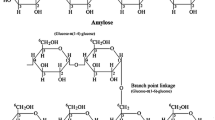Abstract
Ultrasound is one of the mechanical methods used for disruption of microorganisms. Ultrasonic treatments of microorganisms are sensitive to a wide range of parameters such as net thermal power, residence time distribution (RTD), and the biological structure of the target microorganism. A commercial ultrasonic processor attached to a stainless steel processing cell was used in this research work. To evaluate the net heat dissipated in a small volume of the commercial yeast Saccharomyces cerevisiae, the suspension was subjected to 117 W at 20 kHz; the ultrasound cell was operated in a batch configuration with a Perspex base. Mixing of the yeast suspension and the RTD were evaluated using image processing techniques. The results of the present study showed that the heat lost through the stainless steel wall, Perspex base, and the Sonotrode (Titanium) was around 13.5 % of the total power. The yeast disruption results were found to be positive. The yeast disruption test showed that complete yeast reduction can be achieved at 117 W and a specific energy of 1,146 kJ kg−1. Further study is needed to understand the real causes of microorganism disruption using ultrasound.







Similar content being viewed by others
References
Ahmed FIK, Russell C (1975) Synergism between ultrasonic waves and hydrogen peroxide in the killing of micro-organisms. J Appl Microbiol 39:31–40
Alliger H (1978) New methods in ultrasonic processing. Am Lab 10:81–87
Al-lwayzy SH, Yusaf T, Al-Juboori RA (2014) Biofuels from the fresh water microalgae Chlorella vulgaris (FWM-CV) for diesel engines. Energies 7:1829–1851
Balachandran S, Kentish SE, Mawson R, Ashokkumar M (2006) Ultrasonic enhancement of the supercritical extraction from ginger. Ultrason Sonochem 13:471–479
Buttsworth DR, Jones TV (1997) Radial conduction effects in transient heat transfer experiments. Aeronaut J 101:209–212
Bychkov AL, Ryabchikova EI, Koroleva KG, Lomovsky OI (2012) Ultrastructural changes of cell walls under intense mechanical treatment of selective plant raw material. Biomass Bioenergy 47:260–267
Cameron M, McMaster LD, Britz TJ (2008) Electron microscopic analysis of dairy microbes inactivated by ultrasound. Ultrason Sonochem 15:960–964
Carslaw HS, Jaeger JC (1959) Conduction of heat in solids, 2nd edn. Oxford University Press, New York
Chambers LA, Gaines N (1932) Some effects of intense audible sound on living organisms and cells. J Cell Comp Physiol 1:451–473
Ciccolini L, Taillandier P, Wilhem AM, Delmas H, Strehaiano P (1997) Low frequency thermoultrasonication of Saccharomyces cerevisiae suspensions: effect of temperature and of ultrasonic power. Chem Eng J 65:145–149
Earnshaw RG, Appleyard J, Hurst RM (1995) Understanding physical inactivation processes: combined preservation opportunities using heat, ultrasound and pressure. Int J Food Microbiol 28:197–219
Gao S, Lewis GD, Ashokkumar M, Hemar Y (2014a) Inactivation of microorganisms by low-frequency high-power ultrasound: 2. A simple model for the inactivation mechanism. Ultrason Sonochem 21(1):454–460
Gao S, Hemar Y, Ashokkumar M, Paturel S, Lewis GD (2014b) Inactivation of bacteria and yeast using high-frequency ultrasound treatment. Water Res 60:93–104
Garcia ML, Burgos J, Sanz B, Ordonez JA (1989) Effect of heat and ultrasonic waves on the survival of two strains of Bacillus subtilis. J Appl Bacteriol 67:619–628
Hodnett M, Zeqiri B (1997) A strategy for the development and standardisation of measurement methods for high power/cavitating ultrasonic fields: review of high power field measurement techniques. Ultrason Sonochem 4:273–288
Jacobs SE, Thornley MJ (1954) The lethal action of ultrasound waves on bacteria suspended in milk and other liquids. J Appl Bacteriol 17:38–55
Kimura T, Sakamoto T, Leveque JM, Sohmiya H, Fujita M, Ikeda S, Ando T (1996) Standardization of ultrasonic power for sonochemical reaction. Ultrason Sonochem 3:S157–S161
Koda S, Miyamoto M, Toma M, Matsuoka T, Maebayashi M (2009) Inactivation of Escherichia coli and Streptococcus mutans by ultrasound at 500 kHz. Ultrason Sonochem 16:655–659
Kreith F, Manglik RM, Bohn MS (2010) Principles of heat transfer: SI edn, http://www.cengagebrain.co.uk
Liu D, Zeng XA, Suna DW, Hana Z (2013) Disruption and protein release by ultrasonication of yeast cells. Innov Food Sci Emerg Technol 18:132–137
Ordoñez JA, Sanz B, Hernandez PE, Lopez-Lorenzo P (1984) A note on the effect of combined ultrasonic and heat treatments on the survival of thermoduric streptococci. J Appl Microbiol 56:175–177
Ordoñez JA, Aguilera MA, Garcia ML, Sanz B (1987) Effect of combined ultrasonic and heat treatment (thermoultrasonication) on the survival of a strain of Staphylococcus aureus. J Dairy Res 54:61–67
Raso J, Condon S, Sala-Trepat FJ (1994) Mano-thermosonication: a new method of food preservation. In: Leistner L, Gorris LGM (eds) Food preservation by combined processes. FLAIR Final Report, EUR 15776 EN, European Commission, Brussels
Sanz B, Paklacios P, Leopes P (1985) Effect of ultrasound wave on the heat resistants of Bacillus Stearothermophilus spore. Fed Eur Microbios Soc 18:251–259
Scherba G, Weigel RM, O'Brien WD (1991) Quantitative assessment of the germicidal efficacy of ultrasonic energy. Appl Environ Microbiol 57:2079–2084
Schultz DL (1973) Heat transfer measurements in short-duration hypersonic facilities, AGARD-AG-165. Advisory Group for Aerospace Research and Development, Paris
Wrigley DM, Liorca NG (1992) Decrease in Salmonella typhimurium in skim milk and egg by heat and ultrasonic wave treatment. J Food Prot 55:678–680
Yusaf T (2011) Mechanical treatment of microorganisms using ultrasound, shock and shear technology, thesis. University of Southern, Queensland
Yusaf T (2013) Experimental study of microorganism disruption using shear stress. Biochem Eng J 79:7–14
Yusaf T, Buttsworth DR (2007) Characterisation of mixing rate due to high power ultrasound. Ultrason Sonochem 14:266–274
Zhang L, Jin Y, Xie Y, Wu X, Wu T (2014) Releasing polysaccharide and protein from yeast cells by ultrasound: selectivity and effects of processing parameters. Ultrason Sonochem 21(2):576–581
Acknowledgement
T.Y. would like to thank Professor David Buttsworth for his scientific advice at the early stage of this project.
Author information
Authors and Affiliations
Corresponding author
Rights and permissions
About this article
Cite this article
Yusaf, T. Evaluating the effect of heat transfer on cell disruption in ultrasound processes. Ann Microbiol 65, 1447–1456 (2015). https://doi.org/10.1007/s13213-014-0983-z
Received:
Accepted:
Published:
Issue Date:
DOI: https://doi.org/10.1007/s13213-014-0983-z




